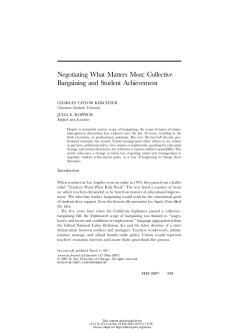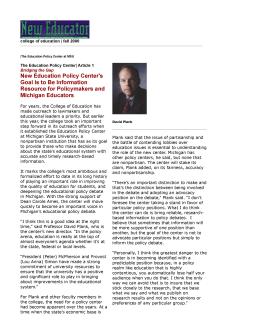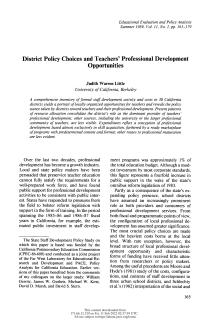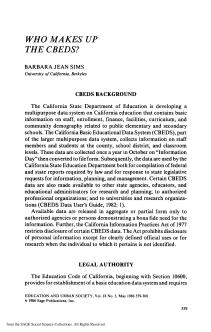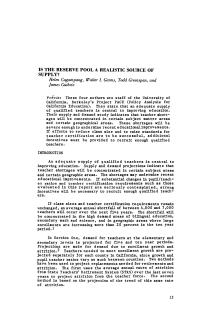School Finance and Governance in California
Published
Summary
Getting Down to Facts is an extensive investigation of CA's public education system commissioned by a bipartisan group of CA leaders. The project aimed to describe California's school finance and governance systems, identify obstacles hindering resource utilization, and estimate costs to achieve student outcome goals. The project resulted in 23 reports by scholars, which highlight that the current school finance and governance systems fail to help students achieve state performance goals, particularly those from low-income families. The reports provide a framework for assessing reform options.
Collective Bargaining and Student Achievement
Published
Summary
This article discusses the evolution of union-management discussions in education over the past two decades, and the emergence of professional unionism. However, in recent years, professional unionism has declined due to management's reluctance to partner with unions, politicians' lack of recognition of union efforts, and unions' reluctance to take on additional responsibilities. The article recommends labor law changes that require unions and management to negotiate student achievement goals as a means of addressing these issues.
New Education Policy Center's Goal Is to Be Information Resource for Policymakers and Michigan Educators
Published
Summary
Michigan State University's College of Education has established the nonpartisan Education Policy Center to provide lawmakers and educational leaders with accurate, research-based information to improve the state's educational system. With the support of the university's resources, the center aims to play an important role in deepening the policy debate and bringing about improvements in the system. The center was established due to a lack of systematic communication between researchers and policymakers in Michigan.
Published
Summary
The reauthorization of the Elementary and Secondary Education Act provides an opportunity to reconsider the federal role in teacher professional development. The largest federal professional development fund is the Eisenhower program. Lessons from Eisenhower and contemporary research suggest that federal funds should be focused exclusively on subject matter knowledge and pedagogy and accountability should be based on assessment of student learning. The purpose is to generate discussion on how to more effectively use federal dollars to improve student achievement.
Published
Summary
An inventory of 30 California districts reveals their policy stance on teacher professional development, which primarily consists of skill acquisition through district-led programs. Other sources, such as universities or professional communities, are less visible. The districts are the dominant providers of development opportunities, with expenditures reflecting a ready marketplace of predetermined programs. Alternative routes to professional growth are less evident.
Published
Summary
This article addresses two conflicting trends in U.S. education. On one hand, there is a considerable expansion of statewide controls of education, including new statewide accountability schemes. On the other, there is a resurgence of interest in the professionalization of teaching. These trends are conflicting—at least for the moment—because state accountability has tended to bureaucratize education and not pay sufficient attention to its impact on the professional dimension of teaching.
Published
Summary
The California State Department of Education is creating a multipurpose data system on California education, including the California Basic Educational Data System (CBEDS) which collects information on staff and students. The data is used for reports, planning, and management. Disclosure of certain CBEDS data is restricted and released only to authorized agencies or persons with a bona fide need. The system has inherent problems, with error control being the most pervasive.
Published
Summary
Teacher shortages in certain subjects and geographic areas may undermine educational improvements. Without changes, an annual shortfall of 4,000 to 7,000 teachers is expected over five years, with the greatest shortages in bilingual education and secondary math and science. Strong incentives will be needed to recruit enough qualified teachers.

